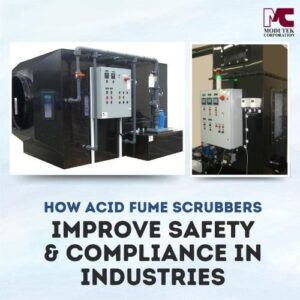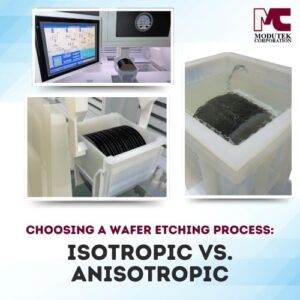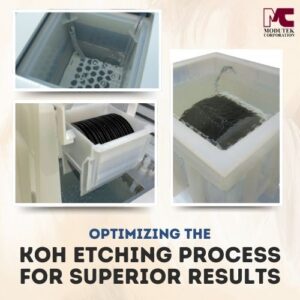![]() The silicon wafer processing steps that include etching or cleaning the wafers with aggressive chemicals require tanks to hold the chemical process. Quartz tanks are impervious to the acids and bases used in wet process stations and the high temperature tanks can include heating and re-circulating. Modutek is a leader in the design and manufacture of high temperature quartz tanks and has over 30 years of experience in this field. As a result, Modutek quartz tanks are designed specifically for wet process etching and cleaning applications and reduce contamination to a minimum while ensuring precise heating for accurate process control.
The silicon wafer processing steps that include etching or cleaning the wafers with aggressive chemicals require tanks to hold the chemical process. Quartz tanks are impervious to the acids and bases used in wet process stations and the high temperature tanks can include heating and re-circulating. Modutek is a leader in the design and manufacture of high temperature quartz tanks and has over 30 years of experience in this field. As a result, Modutek quartz tanks are designed specifically for wet process etching and cleaning applications and reduce contamination to a minimum while ensuring precise heating for accurate process control.
Key Quartz Tank Characteristics for Silicon Wafer Processing
Silicon wafer processing involves etching the wafers to produce microscopic structures and cleaning the wafers in preparation for further process steps. Corrosive chemicals such as hydrochloric acid, sulfuric acid and hydrogen peroxide are used for the etching and cleaning process. Tanks made of quartz are not affected by these aggressive chemicals because quartz is a crystalline material made up of silicon and oxygen atoms held tightly in a crystal lattice. Semiconductor-grade quartz such as used in the Modutek quartz tanks is especially pure, reducing the possibility of contamination.
In addition to resisting corrosion by aggressive chemicals, quartz tanks are stable at high temperatures. Some etching processes work better at temperatures up to 180 degrees centigrade and the quartz crystal lattice remains intact at much higher temperatures. Modutek quartz tanks are designed to take advantage of the chemical and temperature stability of the quartz tanks to provide an ideal vessel for containing the silicon wafer etching and cleaning processes.
The Importance of Reduced Contamination
The use of high-purity flame-polished quartz in silicon wafer processing tanks ensures that there are few non-quartz substances in the crystal lattice and on the polished surface of the tanks. The possibility of contamination by the tanks is reduced to a minimum. Such contamination of the silicon wafers can affect the semiconductor products made from the wafers.
The functionality of semiconductor components relies of microscopic structures and current paths created on the silicon wafer. When a tiny particle or other contaminant interferes with the etching of these structures, the final semiconductor product may be defective or of inferior quality. The rejection rate for finished semiconductor products is heavily influenced by the presence of particles or other contaminants. Reducing the particle count by using high-quality quartz tanks reduces the number of defective components and increases output quality.
Why Precise Temperature Control Gives Improved Process Results
Depending on the chemicals used, a higher temperature may increase the etch rate and reduce processing times. While a high etch rate may be desirable, the amount of etching that takes place still has to be tightly controlled because the amount of etching determines the size and shape of the microscopic structures in the silicon. On the one hand, exactly the right amount of etching has to take place before the process finishes, and on the other hand, if the same process is run again, the amount of etching has to be the same.
The two main factors influencing the etch rate are chemical concentration and temperature. Modutek’s process controls ensure that the right chemical concentration is maintained and the quartz tank temperature controls keep the process at exactly the right temperature. Modutek’s quartz tank temperature controller can keep the temperature constant within plus/minus 1 degree centigrade for precise etching control and excellent repeatability from one batch to the next.
For improved silicon wafer processing, process tanks have to be free of contamination and have to accurately reproduce process conditions. With Modutek’s high temperature quartz tanks, reduced contamination during etching and cleaning of silicon wafers is ensured and the temperature controls of the tanks provide precise settings during the process and for subsequent batches.




